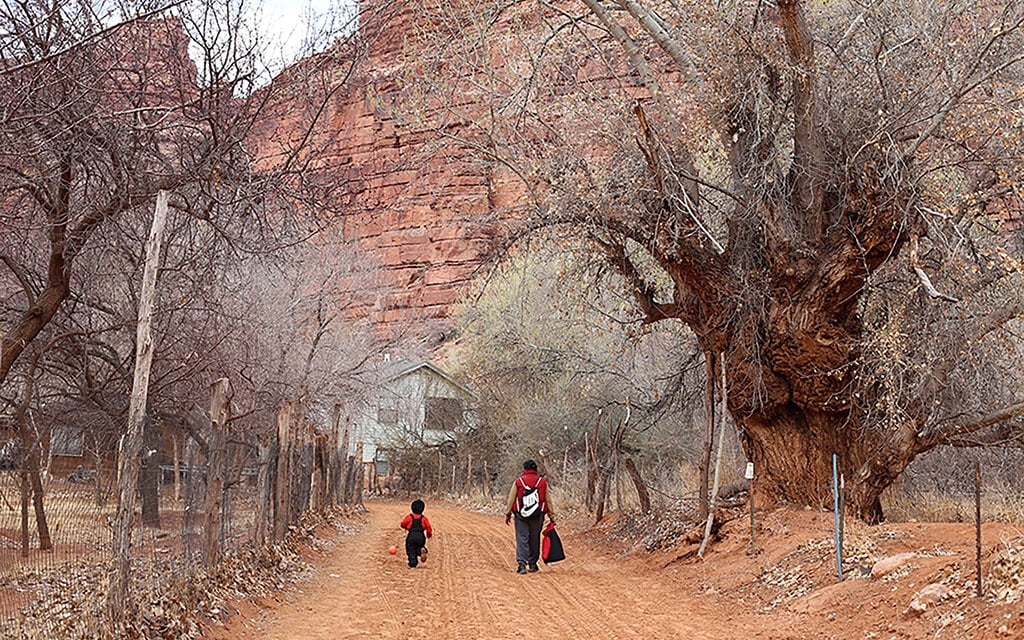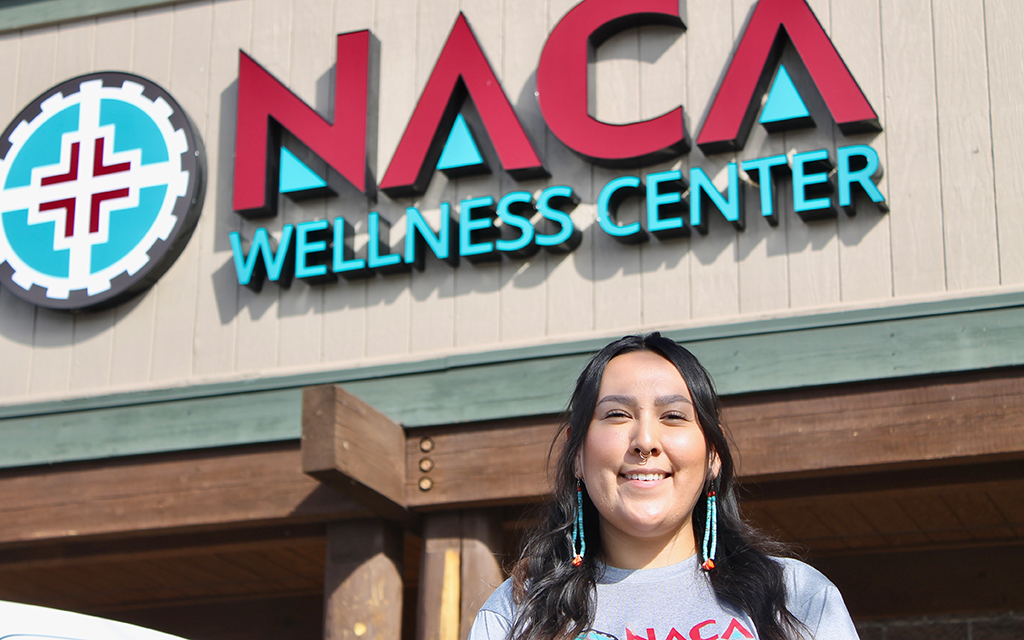
A Havasupai child an adult walk down the road in Supai Village, the tribe’s town at the bottom of the Grand Canyon, in this 2018 file photo. Remoteness of tribal lands is one of the factors leading to poor access to health care – and the need for more facilities. (File photo by Chris Cadeau / Cronkite News)
PHOENIX – Three new and upgraded health facilities recently opened in Arizona to provide Native Americans with better access to health care, and more are in the works.
Health disparities such as lower life expectancy and a disproportionate burden of diseases persist for Native American populations throughout the U.S. A 2022 review of studies about environmental health outcomes in the Navajo Nation found high rates of diabetes, cardiovascular disease, obesity and metabolic syndrome – a group of diseases that increase the risk of heart disease, diabetes and stroke.
The Navajo Nation is one of the largest Native American reservations in the U.S. and delivers health services to over 244,000 people. The Navajo Nation currently has 12 primary care facilities run by the Indian Health Service (IHS), the federal agency that provides health services to American Indians and Alaska Natives. The Arizona Department of Health Services reports that the Navajo Nation is considered a “medically underserved area” by both state and federal regulators.
In November, the IHS, in partnership with the Havasupai Tribe, celebrated the opening of the Supai Health Station, a new and upgraded replacement facility located on the tribe’s lands at the bottom of the Grand Canyon. Accessible only by helicopter, mule or on foot, the new 12,700-square-foot facility replaces a 2,200-square-foot clinic constructed in 1972; the new facility provides space for primary care, dental, pharmacy and medication dispensing, lab, and radiology services.
The Dilkon Medical Center, a new facility run by the IHS and located in the Navajo Nation, opened in Dilkon on Aug. 4. The new facility offers 12 in-patient beds, as well as primary care, eye care, dental care, diagnostic imaging, laboratory, pharmacy, physical therapy, behavioral health and support services.
Sage Memorial Hospital is scheduled to open a new 90,000-square-foot, 25-bed hospital located in Ganado on May 30, 2024. The hospital and medical, dental and field clinics are operated by a private, nonprofit corporation, Navajo Health Foundation-Sage Memorial, and provide health care for about 23,000 people in the area.
The AZDHS report showed that the Navajo nation has 0.3 hospital beds per 1,000 residents, compared to a statewide average of 1.9 beds per 1,000 residents. But IHS doctors said calculating the number of hospital beds is not the best way to evaluate health care. Drs. Christopher ‘Topher’ Jentoft, clinical director, and Jessica Weeks, chief of primary care, see patients at the Chinle Comprehensive Health Care Facility, one of 12 IHS health care centers in the Navajo region.
“It’s hard to put it in terms of number of hospital beds per patient population, it’s a really significant oversimplification,” Jentoft said. “What leads someone to need to be in a hospital bed overnight is not just related to how many people that there are in the community, but what the resources in the community are, what the underlying health situation for the community or individuals in the community are, as well as resources for health care.”
Medical facilities throughout the country, particularly in rural areas, are experiencing doctor and nurse shortages. Jentoft said the Chinle facility has never filled its 60 inpatient beds, but it has had times when it has not had enough staff to attend to every patient. He said this sometimes forces the facility to transfer patients to other hospitals in Albuquerque, Phoenix, Flagstaff or Tucson.
“In the month of October, the Chinle facility had roughly 140 primary care appointments per day,” Jentoft said, “probably about 100 patients per day in the emergency department.”
Navajo Nation currently has 37 nurse practitioners, while Arizona has 9,932. To encourage people to work for Navajo facilities, IHS is providing recruitment incentives such as loan repayment programs and scholarship programs, “which encourage people of American Indian or Alaskan Native descent to pursue healthcare careers,” Weeks said.
IHS has announced plans to build new facilities in Bodaway Gap in Arizona and in Gallup and Pueblo Pintado, New Mexico.


